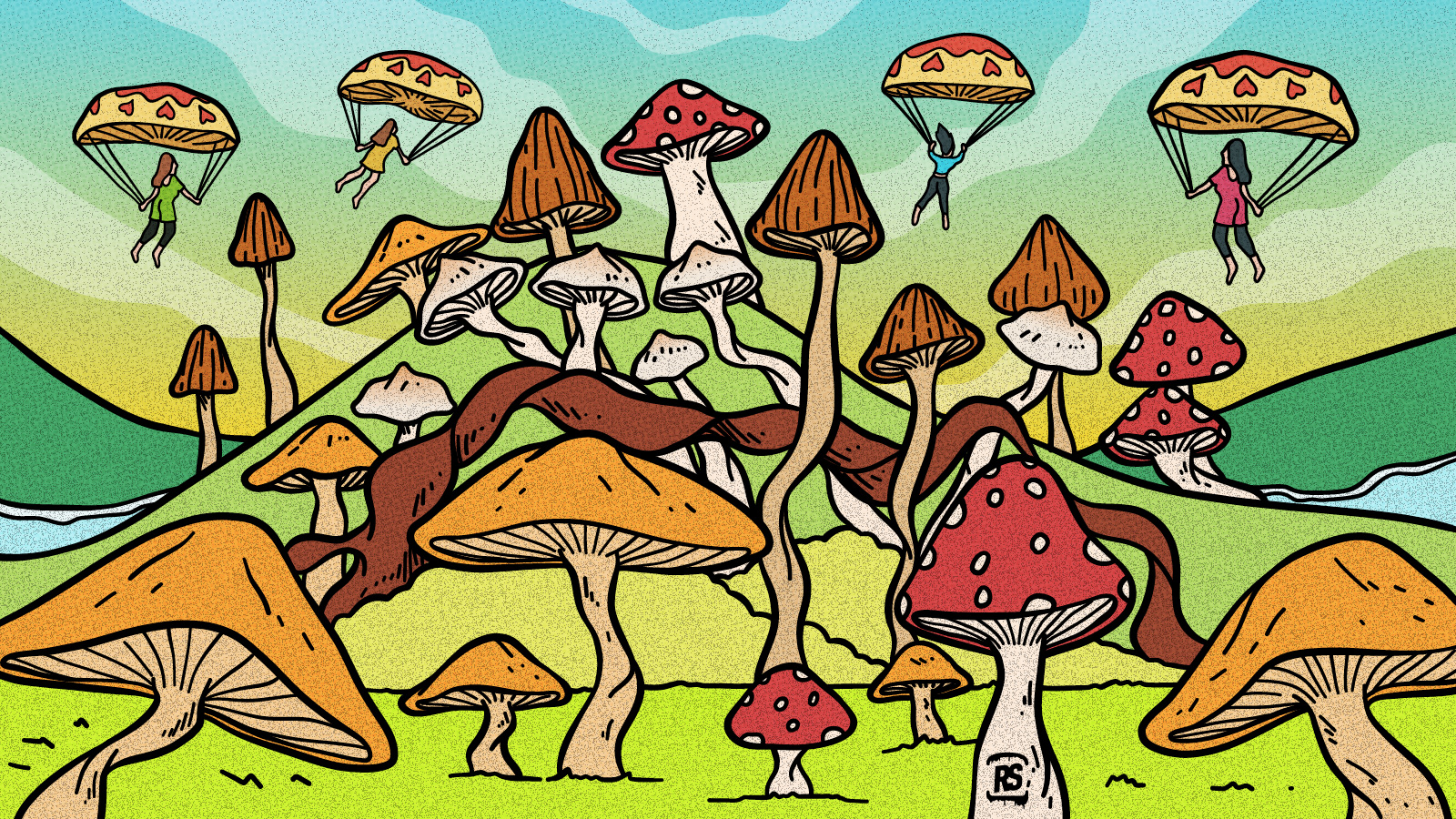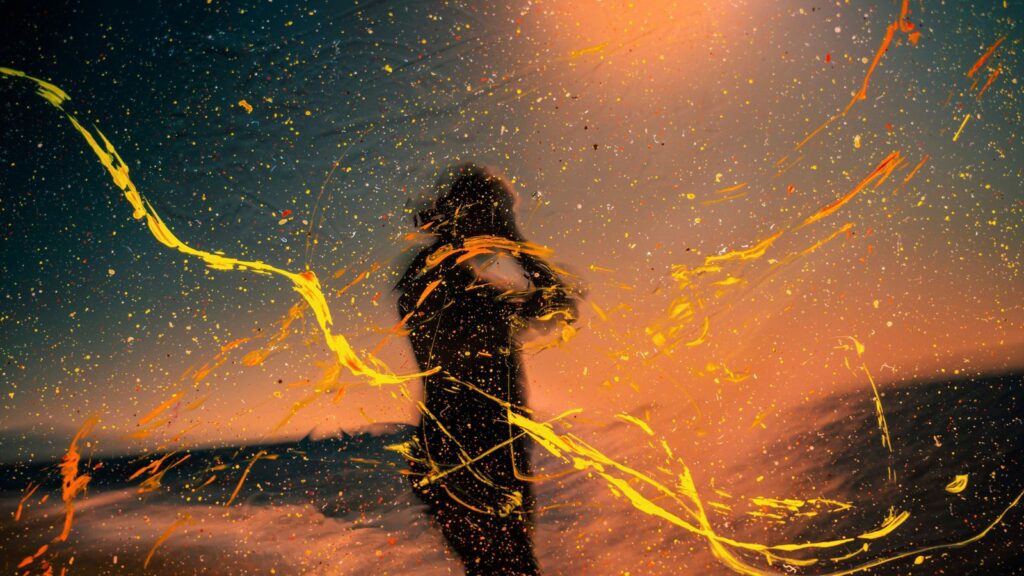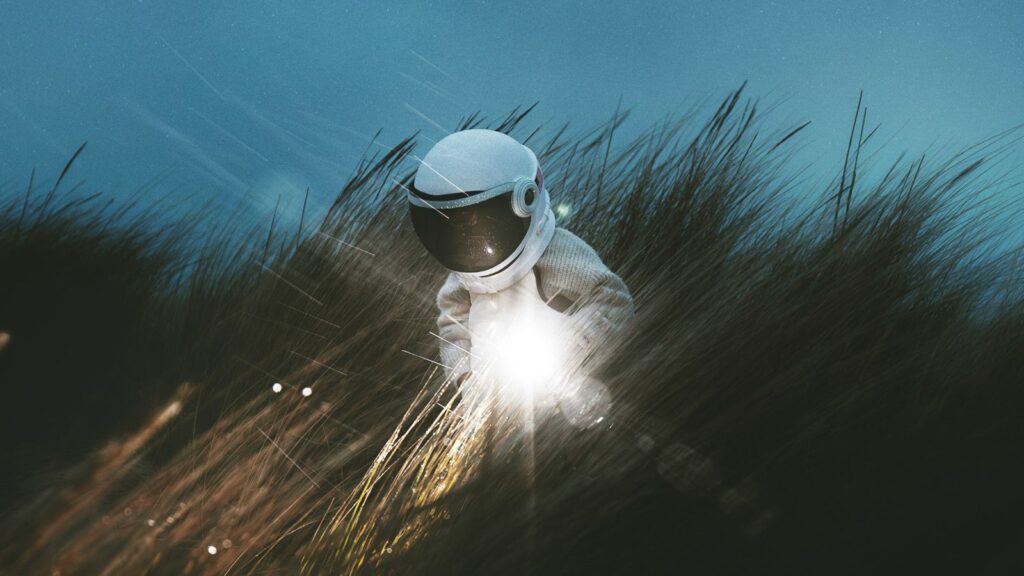Psilocybin is a psychedelic prodrug that is widely known for its entheogen properties and found in over 200 species of mushrooms. Fungi, as a species, have played a crucial role in cultivating the earth. They were one of the first complex life forms to develop on land, helped mammals survive after an asteroid wiped out nearly all life on earth 65 million years ago, and may be the oldest evolutionary line leading directly to humans. Terence McKenna, an ethnobotanist, even believed the evolution from Homo erectus to Homo sapien was a direct result of humans eating mushrooims that contain psilocybin.
In the 1950s and 1960s, psilocybin emerged into mainstream medicine and culture. In 1957, Time Magazine published R. Gordon Wasson’s seminal essay titled “Seeking the Magic Mushroom.” Then Timothy Leary, a leading advocate of psilocybin during the 1960s counterculture movement, propelled the recreational use of mushrooms in the 60s and 70s through the “Harvard Psilocybin Project.” The first psilocybin pills made for the purposes of scientific research, however, were developed at the end of the 1950s. Studies would continue to show that psilocybin had the potential to treat a variety of disorders until the FDA banned its use in 1971. Today it is one of the most used psychedelics throughout the world.
What You Will Learn About Psilocybin
- Psilocybin mushrooms are fungi that contain psilocybin. Most of these fungi also contain baeocystin and psilocin.
- Psilocybin spores are used to cultivate mushrooms.
- Currently, psilocybin is being researched for its potential to help with a variety of mental health issues such as depression, anxiety, addictions, and OCD.
- Psilocybin is classified as a psychedelic serotonergic tryptamine. When consumed it produces a psychedelic effect through its metabolite, psilocin.
- Psilocin then binds to various serotonin receptors altering one’s perception of reality.
- Common effects of psilocybin include euphoria, closed and open eye visuals, altered sense of reality, distorted sense of time, spiritual experiences, nausea, and anxiety.
Overview
Psilocybin is a naturally occurring psychedelic prodrug. It metabolizes almost immediately into an active compound, which is psilocin in this case. While it can be found in over 200 species of fungi, the most potent and most commonly used species are within the Psilocybe genus. Most of these psilocybin mushrooms also contain baeocystin, a psilocybin analog, and psilocin. Many scientists even believe psilocybin mushrooms were the first psychoactive substance that prehistoric humans consumed and catalyzed our evolution from Homo erectus to Homo sapien.
What is Psilocybin
Psilocybin is a naturally occurring tryptamine alkaloid found in a wide range of fungi. Besides the genus Psilocybe, there is a wide range of other genera that also contain psilocybin such as Panaeolus, Inocybe, Gymnopilus and others. All mushrooms from these genera contain psilocybin.
Once ingested, the liver and stomach metabolize it into psilocin, an active psychoactive compound. This produces a psychedelic effect similar to that of LSD, mescaline, and DMT with strong entheogenic properties. Typically, it begins to take effect in 20-40 minutes and lasts about 6 hours. Psilocybin, like many other tryptamines, stays in your system anywhere from 24 hours to a few days. Psilocybin can be used for microdosing as well.

Street Name
- Magic mushrooms
- Psilocybin mushrooms
- Psychedelic mushrooms
- Shrooms
- Caps
Scientific Name
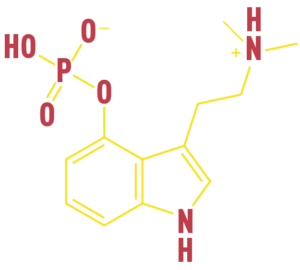
Psilocybin is a psychedelic serotonergic tryptamine, which places it in the same category as DMT. As a matter of fact, they are almost structurally identical, with the main difference being that psilocybin contains phosphate group and DMT does not. Unlike DMT however, psilocybin does not require an MAOI to activate the substance when ingested orally. This means it can be consumed without any preparation.
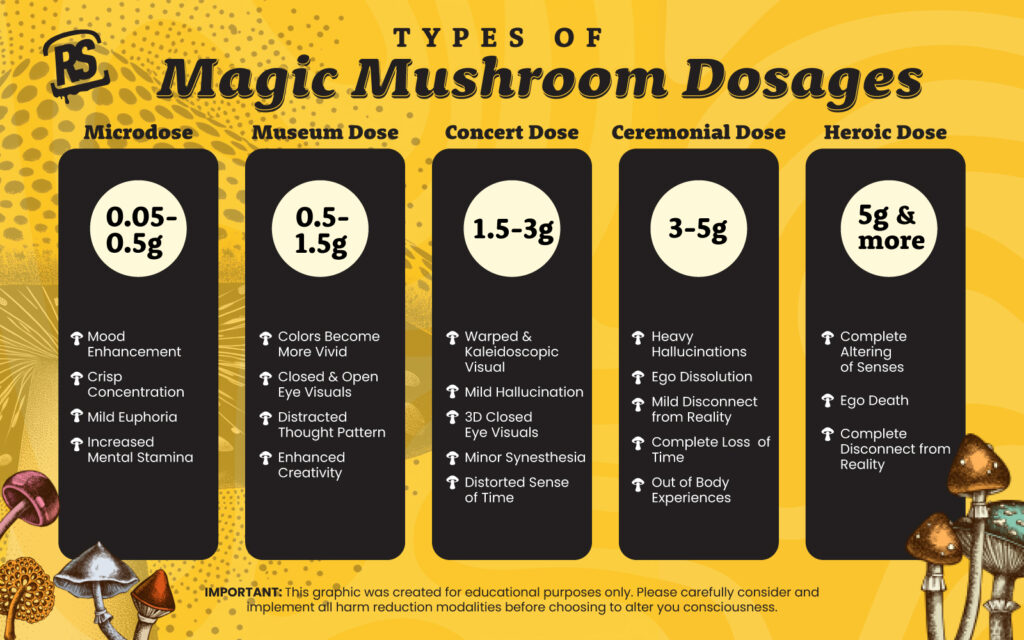
Forms & Ways of Consumption
*Picking mushrooms from their natural habitat can be dangerous. Typically only well-trained mushroom pickers can differentiate between species. The misidentification of mushrooms can sometimes cause sickness or even death when consumed.
Psilocybin is a compound that exists in more than 200 different species of mushrooms. One can consume psilocybin in its pure form (crystal) psilocybin but typically, one simply consumes a psilocybin mushroom by eating the dried bodies of the Psilocybe cubensis fungus. This is the most popular species because it provides the highest yields of dry material when cultivated. In some parts of the world, the fungi can also produce sclerotia, or truffles, such as P. tampanensis or P. mexicana. These truffles have become popular because they’re legal in certain countries.
Some users prefer fresh mushrooms over dried mushrooms because some believe that the drying process reduces potency. There isn’t any scientific research to support these claims but most in the psychedelic community have experienced this to be true. Fresh P. cubensis can contain as much as double the psilocybin than dried P. cubensis for example. This loss in potency is likely from oxidation during the drying process.
Shroom Tea and Lemon Tek
Besides eating the mushrooms dry or fresh, some users make simple extractions in the form of a tea. One of the most popular extraction methods is to grind up the mushrooms then boil them in water for 15 minutes. After pouring this water into a cup, make a second water extraction by boiling the same mushroom material in another cup of freshwater for an additional 15 minutes. Some people add lemon juice to this mixture, which is called Lemon Tek. The citric acid in the lemon juice helps the body speed up absorption, allowing for a quicker onset for the psilocybin/psilocin.
History
The rich history of psilocybin predates recorded history. Some scientists believe that its use dates back to a time before our evolution from Homo erectus to Homo sapien. Murals from as early as 9000 BCE from the Sahara Desert depict dancers with geometric designs holding mushrooms above their heads. These geometric designs are consistent with the visuals many users describe having after consuming psilocybin. From prehistoric tribes to the Aztecs and Mayans, psilocybin mushrooms have continued to play a key role in developing communities and religious ceremonies throughout most of the world.
In recent years, there has been a rapid expansion into research for its potential medicinal uses. One study from 2018 collected the results from a wide variety of earlier studies from 1992 to 2018. This study shows the substance’s potential to treat a variety of mental health conditions such as depression, anxiety, OCD, and alcohol and tobacco addictions. Ronald R. Griffiths is also leading a new wave of research into psilocybin. In one of his studies released in 2016, he highlighted its potential to help patients with life-threatening illnesses battle depression and anxiety associated with that illness. This new wave of research sprung from a change in legislation in 1992 that eased restrictions on research into the substance.

Indigenous Uses
In Northern Algeria, drawings were found that date back to as early as 7000 BCE depicting human figures covered in mushrooms. There have also been several discoveries of temples dedicated to “mushroom gods” in Mexico and Guatemala. In central Mexico, the Mixtec culture worshipped a specific god named Piltzintecuhtli who represented all hallucinatory plants — including the magic mushroom. Often, he is depicted kneeling while holding up mushrooms. Many other groups worshipped similar gods who represented hallucinogenic plants, including the Aztec god Xōchipilli.
In the mid 16th century, a Spanish priest named Bernardino de Sahagún observed and recorded the Aztecs ingesting hallucinogenic mushrooms in his Florentine Codes. He described how merchants would celebrate a successful trip by consuming psilocybin mushrooms once they returned. As he wrote: “The first thing to be eaten at the feast were small black mushrooms that bring on drunkenness.” A Dominican friar, Diego Durán, reported his experience witnessing the Aztecs celebrating an accession of the throne during which many consumed psilocybin mushrooms. This was in his book The History of the Indies of New Spain.
Psilocybin mushroom consumption drastically decreased once the Spanish defeated the Aztecs in the Spanish-Mexica War. The Spanish banned anyone from consuming entheogens as they considered it too similar to pagan traditions. However, this did not completely stop the Indians of Mesoamerica from continuing their traditions. They would still practice their traditional ceremonies, only now they had to do so in hiding from the Spanish authorities for the next four centuries.
Modern Day Discovery
In the 1930s, an anthropologist named Robert Weitlaner observed a Mazatec mushroom ceremony, and later sent samples of the mushrooms to Dr. Blas Pablo Reko, an Austrian botanist. Dr. Reko then forwarded the samples to Stockholm and Harvard for examination in order to confirm the existence and use of “hallucinogenic mushrooms” in foreign cultures. Unfortunately, by the time the samples had reached Harvard and Stockholm, they were in the process of decay.
It wasn’t until the 1950s that the mycologist R. Gordon Wasson traveled to Huautle de Jimenez to observe a ceremony, and later obtained Psilocybe caerulescens during another ceremony. In 1957, Wasson wrote an essay titled “Seeking the Magic Mushroom” in which he recounts his experience taking magic mushrooms in one of the Mazatec rituals he visited. Wasson is noted for being one of the first westerners to participate in a Mazatec ritual and record his findings. This essay then appeared in an issue of Life magazine, featured in the “Great Adventures” series.
In 1956, Sandoz Pharmaceuticals began working to extract the active ingredient in mushrooms. It was none other than Albert Hofmann himself (the scientist who first synthesized and ingested LSD) who isolated psilocybin and psilocin and developed a synthesis technique. Hofmann published the synthesis of psilocybin in 1959.
Important Events, Findings, Studies
A decade or more of extremely promising medical research was conducted using psilocybin before the FDA banned it in 1971. In the late 50s and early 60s, researchers became interested in psilocybin mushrooms to treat various disorders such as alcoholism, depression, and addiction.
In this first phase of research, most researchers discovered how suggestible the psychedelic experience was based on each volunteer’s description of their psilocybin experience (keep in mind we did not have the advanced neuroimaging devices to observe human brains on psilocybin like we have today). Timothy Leary documented these experiences during the Harvard Psilocybin Project. He conducted a number of experiments where he administered psilocybin to various individuals and documented their experiences.
Shortly after Hofmann first extracted psilocybin in the late 50s, Sandoz Pharmaceuticals began producing psilocybin pills, each of which contained 2 mg of psilocybin. Most studies on psilocybin used these pills prior to the FDA ban. Sandoz Pharmaceuticals also sold the pills worldwide to physicians and clinicians for use in psychedelic psychotherapy. During this time there was not a single report of serious complications related to using psilocybin during psychotherapy sessions.
Recently, researchers have been able to study the effects of psilocybin on the human brain more than ever due to new neuroimaging technology and a recent renaissance of psychedelic research.
Timothy Leary and Magic Mushrooms
Shortly after tripping on psilocybin mushrooms in the 1960s, Timothy Leary became the first to ingest pure psilocybin in the form of the Sandoz psilocybin pills. Leary’s profound psilocybin experiences pushed him and his partner, Richard Alpert, to start the Harvard Psilocybin Project. With this project, they performed a series of experiments with Harvard graduate students on psilocybin including the Good Friday Experiment, Concord Prison Experiment, and Marsh Chapel Experiment.
Good Friday
In his most famous experiment, the Good Friday Experiment, 20 students took psilocybin and reported their experiences. Later on, Rick Doblin (the founder of MAPS) conducted a follow-up of the study and found something notable. Leary had failed to mention that one student experienced intense anxiety, and needed restraining as a result.
Concord Prison Experiment
His Concord Prison Experiment studied psilocybin’s use in psychedelic psychotherapy as a potential way to reduce recidivism in inmates. This experiment was conducted on 32 inmates from 1961 to 1963. On average, Concord State Prison saw 62% of their inmates return to prison within six months of parole. Of those 32 inmates that were a part of this experiment, only 25% returned to prison within six months of parole.
Marsh Chapel Experiment
Leary’s Marsh Chapel Experiment administered psilocybin to graduate students at the Harvard Divinity School to see if it could facilitate profound religious experiences. This study was only performed on ten individuals, but all ten reported that they had had a profound religious experience while under the effects of psilocybin.
Following the work of Alpert and Leary from Harvard, recreational use of magic mushrooms skyrocketed — particularly among college students. This resulted in the US banning the possession of psilocybin in 1968. In 1970, the Controlled Substance Act was passed, which categorized drugs into a scheduled system. Most hallucinogens (including psilocybin) were in Schedule I, meaning they were classified as having no medical value and possessing a high potential for abuse.

Laws and Legal Status
Is Psilocybin Legal in the US?
The government enacted a ban on the possession of psilocybin and psilocin in 1968. In 1970, psilocybin and psilocin were listed as Schedule I drugs. In the US, Denver, Oakland, Chicago, Ann Arbor, and Santa Cruz have decriminalized the possession of magic mushrooms, but selling mushrooms is still prohibited. In 2020, Oregon legalized psilocybin, and the District of Columbia decriminalized the use of magic mushrooms.
Is Psilocybin Legal in Europe?
- It is illegal to sell and transport psilocybin from Austria. Possession has been decriminalized, and cultivation is legal as long as the mushrooms are not intended for consumption. Those caught with possession of mushrooms intended for personal use may be required to undergo free therapy.
- In Portugal, psilocybin mushrooms are illegal but decriminalized. Individuals caught with amounts intended for personal use may be required to go to rehabilitation or therapy.
- In the Netherlands, psilocybin mushrooms are legal in the form of truffles.
- Consistent with UN Policy, psilocybin is illegal in Italy; however, psilocybe mushrooms are decriminalized. Grow kits and spores are legal to sell and obtain, but administrative punishments such as losing your driver’s license may be the consequence of getting caught with mushrooms.
- Spain decriminalized personal possession and consumption of psilocybin mushrooms, whereas psilocybin itself remains illegal. Cultivation and sale is illegal, and the legality of spores and grow kits is vague.
The Legality of Psilocybin in the Rest of the World
- The British Virgin Islands allows possession and cultivation of psilocybin mushrooms. Although it is illegal (but unenforced) to sell or transport them.
- Possession, sale, transport, and cultivation of psilocybin mushrooms are all legal in Jamaica. Jamaica openly sells psilocybin mushrooms.
- It is legal to possess, sell, transport, and cultivate magic mushrooms in Brazil. Psilocybin and psilocin are listed as illegal, however, the mushrooms themselves are not considered illegal.
- Possession of magic mushrooms is illegal in Mexico, although there’s no enforcement if the magic mushrooms are in indigenous cultures. Cultivation of mushrooms is illegal unless the mushrooms are grown in the wild. Sale and transport are illegal.
- Magic mushrooms are legal in Samoa.
- As of 2018, they are illegal in Vietnam.
Pharmacology
Psilocybin is a substance that belongs to the group of hallucinogenic tryptamines. Psilocybin’s active metabolite is psilocin. When ingested, psilocin acts primarily on the serotonergic neurotransmitters. It primarily acts on the 5-HT2B and 5-HT2C receptors located in the brain with slightly lower activity on the 5-HT2A receptors. This activity causes increased concentrations of dopamine in the basal ganglia which creates the euphoria and altered sense of reality users experience when taking psilocybin.
The DMN (Default Mode Network) Hypothesis
The Default Mode Network, or DMN, is an interconnected network of interacting regions in the brain. When a person performs an activity, it triggers certain areas in the brain. The DMN is most active at rest. It is a specific part of your brain that is always on when you are awake but turns off when you’re sleeping. Studies indicate that psilocybin turns off this part of the brain as well. Deactivation of the DMN causes a person to question their everyday activities and lose their sense of reality. Some believe that this deactivation causes many to understand why they do the things they do on a daily basis, leading them to question and further understand what motivates their behavior.
The location of the 5-HT2A receptors may explain how and why psychedelics affect the DMN. A large part of DMN is located in the neocortex where these receptors are located. The neocortex controls sensory perception, cognition, motor commands, spatial reasoning, and language. Studies show that dysmorphic alcohol-exposed adults had significantly higher activity within the DMN. Deactivating the DMN could explain why some users report psilocybin helps treat addiction. Its control over cognition could be how activation of the 5-HT2A receptors causes the deactivation of the DMN. One study demonstrates that the psychotomimetic effects of psilocybin can be blocked completely by using a preferential 5-HT2A receptor antagonist called ketanserin.
Study
A recent study by Dr. Robin Carhart-Harris shows that psilocybin dramatically reduces cerebral blood flow (CBF) to the default mode network (DMN). The same study also found that psilocybin decreased coupling between the medial temporal lobes and the DMN. He came up with the hypothesis that decreased MTL-DMN coupling is necessary to transition into primary consciousness.
According to Harris’s findings, there are six clear effects: (1) the psychedelics stimulate the 5-HT2A receptor, (2) the deep layer of pyramidal neurons depolarize, (3) cortical activity will then become desynchronized, (4) brain networks “disintegrate”, (5) network metastability increases, (6) connectivity motifs within a limbic/paralimbic network increase.
The net effect of all these processes is an increase in overall entropy. This moves the brain toward a point of “criticality,” and relieves the structures of narrow/restrained thinking. This is the primary reason that psychedelic therapies are showing tremendous positive therapeutic effects. These effects express themselves in patients who experience conditions such as alcoholism, depression, OCD, and anxiety. Professionals understand that in order for these effects to be beneficial and treat a condition, the transition to and out of primary consciousness must be mediated by professional therapeutic care.
Toxicity
Before we can discuss whether or not psilocybin is toxic, we first need to define what makes a substance toxic. Toxicity is defined based on the levels of exposure required for a substance to cause harm to a human or animal. The level of toxicity is measured based on the mushroom dose required to cause harm to a human. Even water can be toxic in too high of a dose and lethal snake venom can be non-toxic in a small enough dose. LD50 is a common measurement of toxicity, which measures the lethal dose for half of the tested organisms.
Something is toxic when it harms cells and/or bodily tissues. After taking psilocybin, animals did have any tissue damage. Furthermore, no record exists of any neurophysiological adverse effects after healthy adult volunteers ingested psilocybin. On the contrary, there have been multiple studies that report positive neurological effects after the administration of psilocybin.
Psilocybin is one of the “safest” drugs within the psychedelic community. Users of MDMA, LSD, cocaine, marijuana, opiates, sedatives, antidepressants, methamphetamine, and NSAIDs, have all shown higher emergency hospital admission than psilocybin users. The estimation is that a 130 lb person would have to consume a whopping 3.7 lbs of psilocybin to be a lethal dose. This statistic is based on experiments done with rats and psilocybin mushrooms.
See our microdosing psilocybin guide for an in-depth review of dosage guidelines.
Interactions
Psilocybin, as is true with every other serotonergic psychedelic, is a vasoconstrictor to a certain degree. This means that it can be unpleasant or dangerous to mix it with other vasoconstrictors. However, some users mix smaller doses of psilocybin with MDMA or LSD. The combination of LSD, MDMA, and psilocybin is what the community calls a “Jedi Flip”. Users refer to the combination of psilocybin and MDMA as a “Hippy Flip”.
When psychedelic substances are mixed with other substances they produce a “synergic action”. This can increase the positive effects of each substance, and lower the challenging effects. However, when taken in combination, users reduce the dosage of all of them. They usually take half or one-third of the amount of a common dose.
Magic mushrooms mix well with MAOI, a “monoamine oxidase inhibitor” such as harmine. Psychedelic substance users mix mushrooms with plants that contain MAOI, such as banisteriopsis caapi or peganum harmala. MAOIs usually increase and prolong the effects of tryptamines. Sometimes cacao can replace stronger MAOIs, as it is a less potent MAOI. According to reports, however, mixing SSRI antidepressants with psilocybin can reduce the effects of psilocybin. Not enough research however currently exists on this issue.
Safety
Can You Overdose on psilocybin?
Technically, yes. The estimated lethal dose of p. cubensis for a 130 lb human is 3.7 lb of dried mushrooms.
Is Psilocybin Dangerous?
At the forefront of concern within the psychedelic community, is a person’s predisposition to any mental illnesses that are in the family history. Psilocybin and other psychedelics may trigger psychosis. “Set and setting” (coined by Timothy Leary) is a real phenomenon that can greatly impact the feelings, safety, and insights of a psychedelic experience. An emphasis on set and setting is paramount in the conversations within the psychedelic community.
Is Psilocybin Good for You?
Many recent (and older) studies have shown psilocybin helping tremendously with personal insights, overcoming addiction, end of life anxiety, depression, and creativity. There have been very few reported cases of persisting perception disorder (HPPD) from psilocybin mushrooms. In the reports that do exist, the individual was using psilocybin mushrooms with other drugs.
Nevertheless, HPPD is something to be cautious of. In 2005, an 18-year-old man reported experiencing HPPD after consuming psilocybin and cannabis. In 2013, the only case of HPPD that occurred after ingesting solely psilocybin was reported.
Common Side Effects:
A psychedelic’s effects will have large variances, depending on the individual. A variety of factors contribute to what one will experience. For example, set and setting. Timothy Leary conducted a study with 175 individuals to whom he administered psilocybin in a setting similar to a common living room. In the larger groups of eight people or more the individuals felt less support from the group overall and had less pleasant experiences than those placed in smaller groups of six people or less. This is just one example but demonstrates how that can impact the experience and effects of a psychedelic experience.
Sometimes sensations will come on as the substance is taking effect and as the person goes through their experience. It is important to remember that there is a range of effects possible. Everybody is different. While everyone’s experience with psilocybin will differ and the effects may shift throughout the experience, based on user accounts and studies, listed below are some common side effects. Lastly, most psilocybin mushrooms contain the psychoactive compound baeocystin, which may slightly alter the effects compared to pure psilocybin or psilocin.
- Euphoria
- Closed and Open-Eye Visuals
- Synesthesia
- Heightened responsiveness to stimuli
- Altered sense of reality and time
- Enhanced ability for introspection
- Heightened spirituality
- Primitive or Childlike thought patterns
- Heightened emotions
- Lasting increase to the personality trait openness
- Alterations in an individual’s stretch reflex
- Dilated pupils
- Altered heart rate and blood pressure
- Passing nausea
- Paranoia
- Anxiety
- Tremors
Psilocybin Today
In recent years, many psychedelic substances—mainly psilocybin, LSD, and MDMA—have experienced a reemergence in clinical research and advocacy. This is due to an FDA meeting in 1992 where they claimed that psychedelic drugs have an acceptable risk-benefit ratio. In this meeting, the FDA also claimed psychedelics are not any more dangerous than other drugs routinely researched. Now scientists can conduct research with modern tools like brain imagery to further understand the way psychedelics function. Psilocybin is currently being studied for its therapeutic potential to help with depression, anxiety, addiction, and various other disorders.

Trends
The popularity of magic mushrooms in the US has remained low compared to other drugs such as cocaine and alcohol. However, among psychedelics, psilocybin has shown to be highly popular for recreational use and spiritual/mystical experiences.
Psilocybin is more common among younger adults, and drugs like LSD, mescaline, and peyote remain more common among older adults. Based on a study from 2013, the use of magic mushrooms has increased in the US and worldwide since the 1970s. Psilocybin use (and many other psychedelics) are more popular with males of all ages than in females. However, the popularity of psilocybin as a tool for therapy is greatly increasing as scientists are publishing more positive research on psilocybin.
Current Studies & Research
Currently classified as a Schedule I substance, researchers at Johns Hopkins University claim that psilocybin mushrooms should be downgraded from a Schedule I to Schedule IV substance.
In 2019, the City of Oakland, CA voted to decriminalize magic mushrooms just one month after Denver, CO decided to do so. There is a push in California to decriminalize psilocybin mushrooms on a statewide level, with many psychedelic awareness and advocacy groups supporting this change. Moreover, Oregon’s state legislature is considering passing a bill to decriminalize psilocybin mushrooms and offer licenses to grow. Much of this promising research is happening because of the Multidisciplinary Association of Psychedelic Studies (MAPS).
MAPS and Psilocybin
MAPS is currently doing medical research with MDMA, psilocybin, LSD, marijuana, ibogaine, and ayahuasca. Another organization, Heffter Research Institute specializes in psilocybin research. Among Heffter Research Institute’s board of directors is co-founder Dr. David Nichols, a widely celebrated researcher, professor, and expert on the chemistry of hallucinogens. Other researchers include Dr. Dennis McKenna, an esteemed writer, ethnopharmacologist, psychonaut, and brother to the late Terrence McKenna, and Dr. Roland Griffiths who is doing phenomenal research at Johns Hopkins into psilocybin and addiction.
For a list of psilocybin research in progress, please click here.
Psilocybin and Depression
There are many psilocybin research studies currently in progress. Psilocybin research is focusing on effects in treating Major Depressive Disorder, smoking cessation, alcohol dependence, and many other conditions. The two major universities in the United States doing psilocybin work are Johns Hopkins and NYU School of Medicine. At Johns Hopkins, Dr. Roland Griffiths and his team have completed a study titled, “Study of Psilocybin in Cancer Patients,” which suggests that psilocybin can offer significant help in decreasing depression and anxiety among cancer patients.
Another study at Hopkins, the “Effects of Psilocybin in Major Depressive Disorder” is assessing whether psilocybin will help patients with Major Depressive Disorder. The hypothesis for the previously stated study is that psilocybin will lead to both a rapid and sustained antidepressant response. Both MAPS and Heffter support national and international psilocybin research, among other institutes.
Around the World
There are also several psilocybin studies currently underway internationally. The Beckley Foundation, based in the UK, is sponsoring some of the most progressive psilocybin research around today. Founded in 1996 by Amanda Fielding—an esteemed psychonaut and scientist herself—the Beckley Foundation is currently sponsoring research on the neuroscience of psilocybin, along with MAPS and Heffter.
This research is taking place at Imperial College London with Dr. David Nutt and Dr. Robin Carhart-Harris, both of whom have published psilocybin research in the past, namely the “Entropic Brain Model.” Heffter is also sponsoring a study in Switzerland entitled “Psilocybin Effects on Attention, Perception, and Cognition.” Similarly, MAPS is sponsoring a study called “Experimental Studies on the Effects of Psilocybin on Binocular Depth Inversion, Binocular Rivalry” in Germany.
FAQ
How Long Does Psilocybin Stay in Your System?
Psilocybin, like many other tryptamines, stays in your system anywhere from 24 hours to a few days, the latter of which is rare.
How to Store Psilocybin?
Keep all dried magic mushrooms in a dry, cold place. One can put silica gel packs in a container to temperate moisture. When truffles or fresh mushrooms are in question, store them in an airtight container or vacuum bag inside a freezer.
Do Mushrooms Lose Their Efficacy or Expire?
Over time, if kept improperly, mushrooms can degrade in potency. Read above how to keep mushrooms properly.
What Does Psilocybin Taste Like?
This highly depends on the method. If mushrooms are dried or fresh, they taste like dry white-buttons with a bitter aftertaste. If they are in a tea form, the taste is similar to mushroom soup. Mushroom tea tastes better with a bit of salt added.
What Does Psilocybin Smell Like?
Psilocybin mushrooms smell like ordinary mushrooms, with a hint of bitterness.
How to Pronounce Psilocybin?
Sil-uh-sahy-bin.
Where is Psilocybin Legal?
In Denver, Colorado psilocybin mushrooms are a decriminalized substance. Psilocybin mushrooms are legal in Brazil and Jamaica. While psilocybin mushrooms are illegal in the Netherlands, psilocybin truffles are legal. The British Virgin Islands prohibit the sale and transport of psilocybin mushrooms, but possession and personal use are legal.
What does Psilocybin Do in my Body?
Psilocybin is a prodrug meaning it almost immediately metabolizes in the body to a psychoactive substance. Psilocin is the psychoactive metabolite of psilocybin. It produces the psychedelic effect by binding to the 5-HT2A, 5-HT2B, and 5-HT2C receptors in the central and peripheral nervous system.
Disclaimer: Psilocybin is potentially categorized as an illegal drug. Reality Sandwich is not encouraging the use of this drug where it is prohibited. However, we believe that providing information is imperative for the safety of those who choose to explore this substance. This guide is intended to give educational content and should in no way be viewed as medical recommendations.
If you have relevant information or updates concerning the research and studies of psychedelic substances, please reach out to info@realitysandwich.com We appreciate your contribution. –RS
